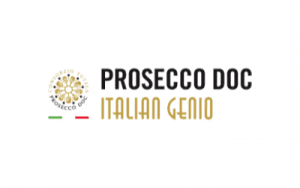Il Carnevale Lavellese
Il Carnevale di Lavello, despite being an integral part of Lucania’s historical carnivals, has its own
uniqueness and a cultural tradition that has enabled it to stand the test of time and innovation!
The delegation will perform at the Venice Carnival Street Show:
Giovedì Grasso 16 febbraio
11.30: Campo S. Maria Formosa
14.00: Piazza San Marco
16.00: Campo S. Maria Formosa
It starts on 17 January, the day of St Anthony Abbot; it continues every Saturday night until the first Sunday of Lent, with the customary parade of floats.
To get to the heart of this event, you have to go back in time, when the people, made up
mostly peasants, shepherds and small artisans were crushed by the harsh laws of the lord
(Dominus), master of the lands and lives of the ‘peasants’, and by those, no less intransigent, of the
Church of God
Carnival was the only time when, with a reversal of roles, one could, under the
mask, make fun of the master and forget the strict laws of the Church, under that
mask everyone could feel:
“Domën e DDeië”
Signore e Dio
But despite the reversal of roles, in an anticlerical sense, the mask preserved the rituals and gestures of religious brotherhoods.
The Domën (Domino) outfit originally consisted of a white habit, a black cape and a black cone-shaped hood, from which only the eyes could be glimpsed, and was modelled on the costume used by the Confraternity of Good Death.
costume used by the Brotherhood of Good Death.
Later it became a black satin tunic with a cape embroidered with symbolic figures and
completed with a hood (U’ Pappëloscë) and a cloth mask that completely covered
the face. Accompanying the dress were one or two bags for sugared almonds to be given to the lady after dancing.
dancing.
Later, the ‘Domino’ took on the characteristic red colour, linked to a ritual symbolism that is
proper to the Catholic Church, but also to pagan rites (bacchanals).
In ancient times, only men were masked. The group of ‘copël’ masks, guided by an
“The group of ‘copël’ masks, led by a non-masked ‘conductor’, entered the ‘festini’ and had to respect certain rules: they could not
choose the lady, but follow the arrangement of the chairs arranged in a circular fashion and give the confetti, after dancing in absolute anonymity.
The dance was the only time when the boys, under the mask, could exchange fleeting words of love with the girls. Each group had the right to have two dances and to respect the furnishings, which often, amidst the euphoria of music and wine, were shattered. It was then and still is today a great moment of sociality and collective sharing. At midnight, the door of the house would close and the table would be set (a Franciscan banquet) at which all the guests would take part with dishes they had previously prepared: tiella di patate e lambascioni (wild onions), baked ‘arraganato’ codfish, sausages and… wine. During the ‘festini’, local folk music and dances were performed by small orchestras.
The folk group ‘I F’st’nidd’ follows in the wake of tradition: it researches and re-proposes traditional folk music and dances but, with an eye to the future, speaks to the new generations with the production of new musical texts and dances linked to the territory and to this very special Carnival, because the Lavello Carnival is all this, but also much more.



















